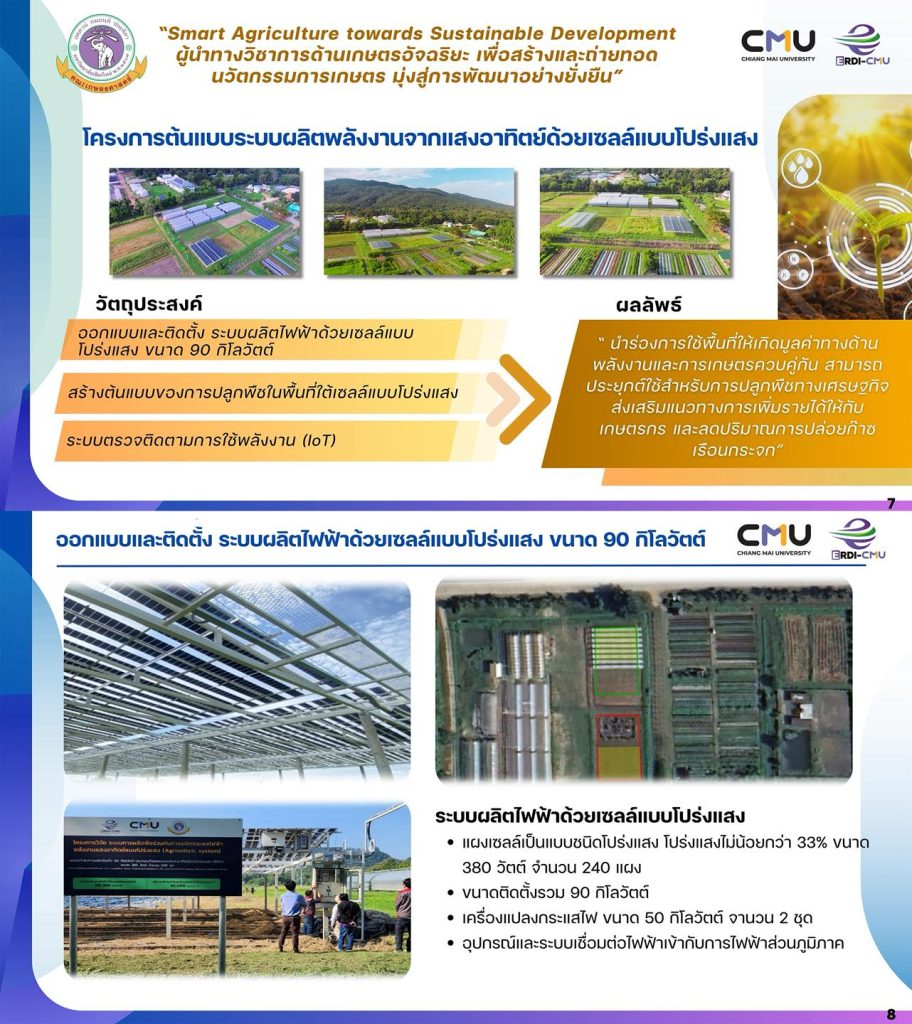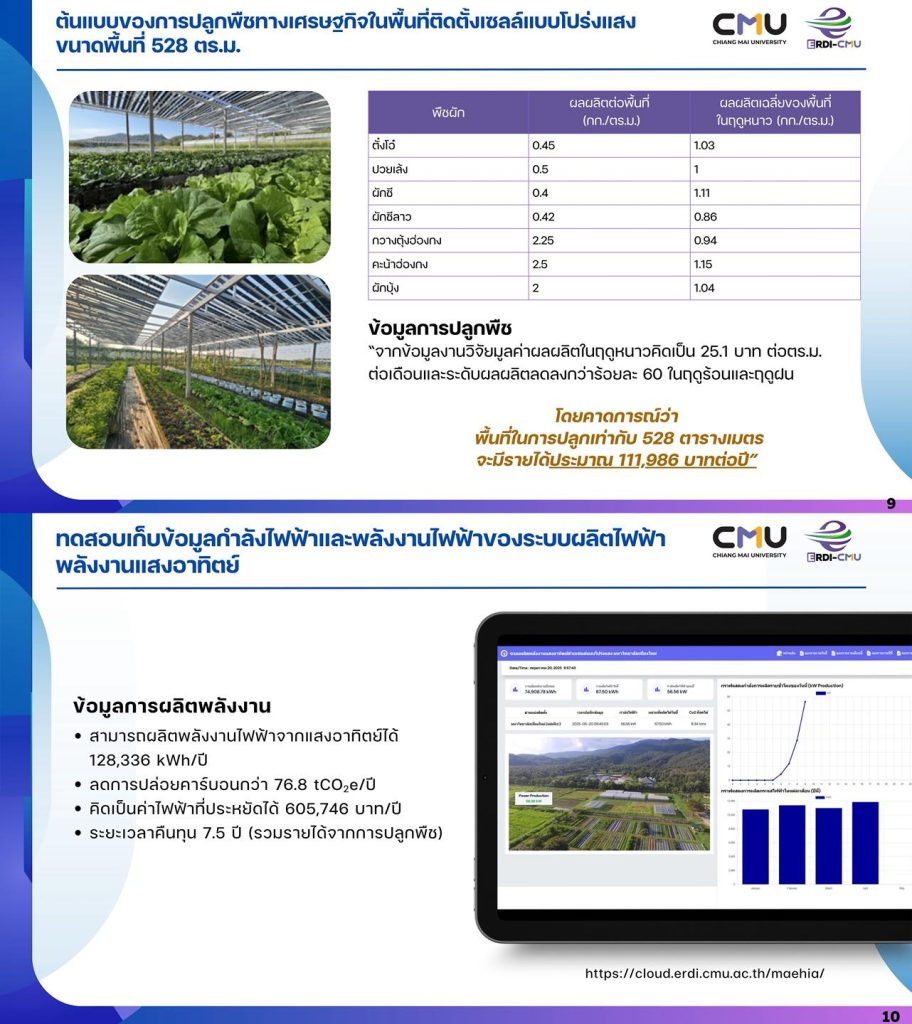CMU and solar energy for smart agriculture
In addition to generating electricity to reduce energy costs, Chiang Mai University has also integrated solar power into the agricultural sector to create a new model of environmentally friendly smart agriculture.
The Faculty of Agriculture, CMU, has initiated a prototype Agrivoltaic System project, a 90-kilowatt transparent solar panel system installed on actual farmland.
Agrivoltaic System Highlights
• 33% light penetration, allowing plants to continue growing well under the solar panels.
• Farmland remains fully utilized, eliminating the need to choose between growing crops or generating electricity.
• IoT systems monitor energy consumption and environmental conditions, such as humidity, light, and temperature.
Test Results
• 528 square meters of experimental crops were grown.
• 111,986 baht in annual income from the crops was generated.
• Crops grown included coriander, morning glory, Chinese kale, celery, and lettuce.
• This is an efficient use of land, both in terms of energy and economics.
⸻
Integrating clean energy with Thai herbs under the BCG Model
This project does not stop at growing vegetables in a solar farm system. It also extends to the development of Thai herbs, based on the BCG Economy (Bio-Circular-Green) concept, a future economic approach that emphasizes sustainability and biological value.
Comprehensive BCG Model
• Upstream: Developing herbal plantations using safe agricultural systems under solar panels.
• Midstream: Processing herbs, such as extracting active ingredients and producing health/beauty products.
• Downstream: Connecting with local farmers, creating a network of high-quality herbal producers with marketing channels.
This project not only creates a clean energy production system, but also serves as a learning resource and model for promoting careers, generating income, and stimulating the local economy.
⸻
With the “Clean Energy and Smart Agriculture” approach, Chiang Mai University is transcending the limitations of the term “solar cells” to become a sustainable development infrastructure that everyone can participate in.
⸻




